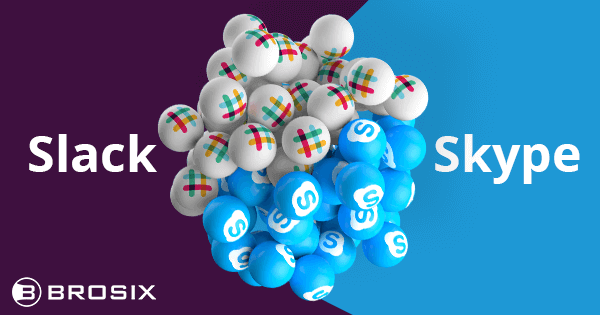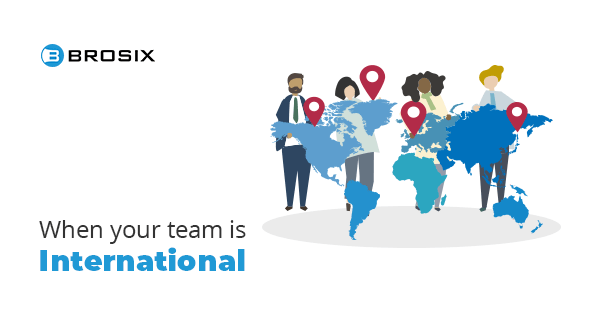
What is Instant Messaging? Your Complete Guide to IM.
Instant Messaging, also known as IM, has soared in popularity in recent years. In fact, the number of worldwide instant messaging accounts totaled seven billion in 2019.
Despite so many using instant messaging in their everyday lives, many would struggle to answer the question of what exactly IM is. Answers to this question would not only have a wide range, but fail to capture all of the different elements and uses of IM.
The answer to this question is important, though, as it can provide good insights into the potential uses for IM both personally and in the business world.
So what exactly is instant messaging? Read on to explore a brief history, the features that distinguish it from other means of communication, as well as some uses cases and best practices.
Table of Contents
Direct Online Communication
At its core, instant messaging is a real-time online communication method used to connect two or more people.
Instant messaging software is best known for its direct peer to peer connections, such as the messaging pioneered by the now-defunct AOL Instant Messenger (AIM). AIM, and other similar programs, initially allowed two ‘contacts’ to directly send and receive real-time text-based messages as long as they were both online and logged on.
Today, when people think of instant messaging they tend to stop at peer-to-peer chat, thus viewing IM solely as a vehicle for sending direct messages.
In the past decade, however, IM has expanded to include a variety of communication features, not just for personal use, but for business environments, too. This growth has brought a range of benefits to both individuals and businesses, like greater transparency and networking opportunities.
A Brief History of Instant Messaging
Who could forget the days of buddy lists on America Online (AOL) or even ICQ (I Seek You) before that? Other platforms like Yahoo Messenger and Microsoft’s MSN brought instant messaging into the mainstream in the 90s.
You’d be forgiven, however, for not knowing that instant messaging systems date back to the 1960s. MIT’s pioneering Compatible Time-Sharing System (CTSS) allowed up to 30 users to log in and send messages to each other, all the way back in 1961!
While rudimentary messaging programs like CTSS connected universities and research labs, those early days have since morphed into an industry spanning myriad platforms, social media, mobile IM, business environments, billions of users, and even more instant messages.
Real-Time Communication Features
Today’s instant messaging couldn’t be further from the original CTSS, or even the groundbreaking platforms of the 90s. IM has evolved to include a range of real-time communication features with implications for both personal and business use.
Consumer-grade instant messengers like WhatsApp, Viber, and Telegram have exploded in popularity. Thanks to their mobile capabilities, users can chat and share media and content from the palm of their hands.
One of the most common features of modern-day IM is the ability to chat in groups. Group chat, a shared space for communication between more than two users, enhances communication in situations – like the workplace, for instance – which require the exchange of information among multiple individuals. Just remember to consider these tips when chatting in groups.
By way of Voice over Internet Protocol technology, voice and video capabilities facilitate more personal communication. Audible and visual interactions can serve a variety of use cases, like empowering more dynamic meetings for remote workers.
For both consumer and enterprise-grade instant messengers, file sharing and peer-to-peer file transfers facilitate the distribution of large media and content files, albeit via different routes and technologies.
Instant Messaging Helps You Work Smarter
Today’s instant messaging isn’t just about the individual power to communicate quickly and conveniently in real time. It also serves to boost the work environment, from the ability of a team to communicate efficiently, all the way down to the workplace culture.
“Powerful tools are giving leaders deeper understanding of their organization’s culture and work dynamics. They also provide a way to get ahead of issues that could handicap success.”
– Doug Claffey, CEO and CoFounder at Energage
Carefully tailor internal communication channels for feedback or team-building. Doing so better aligns team communication and helps foster more wholesome connections – boosting effectiveness and driving results.
All-in-one communication and collaboration platforms enhance internal processes and productivity while helping you streamline operating procedures and overhead.
Tools like screen-sharing, instant screenshot, virtual whiteboards, and unlimited size file transfers transform how teams approach and resolve issues from collaboration on copy and content to IT and tech support.
What’s more, all-in-one platforms allow you to:
- Consolidate the software in your arsenal;
- Reduce instances of multitasking;
- And cut back on costly applications and upgrades
Despite their prevalence, many free instant messengers are fraught with privacy and security issues, bugs and ads and solicitations. IM for business, on the other hand, often offers more robust security protocols.
Private team networks allow teams to communicate over an enterprise-exclusive network. Peer-to-peer channels, end-to-end encryption and anti-virus and malware integration facilitate more secure chat while bypassing potentially vulnerable or malicious third-party servers.
Best Practices for Your Instant Messaging
Instant messaging isn’t immune to potential drawbacks. A few best practices, though, can help you avert general ineffectiveness, low team morale, or both.
If your team is chatting like crazy but producing few deliverables, consider how your chats are organized and who’s in them. With IM, you can tailor shared chat spaces by project, department, or location, for example. Establish a separate chat room to recognize birthdays, anniversaries and team victories, or just to share memes and GIFs.
Take advantage of administrative features. Control over shared chat spaces, the features to which users have access, and who can communicate with whom further mitigates possible disadvantages.
Furthermore, instant messaging also helps ensure remote workers are included in the mix. Quick messaging capabilities facilitate more regular communication between different locations. And by utilizing the rich voice and video technology afforded by today’s instant messengers, you can streamline meetings with your remote team or even hold virtual team-building sessions.
Believe it or not, instant messaging even comes with its own etiquette.
- Respect others’ availability settings and status updates
- Try to first seek permission to chat, just as you would on the phone
- Always use proper English
- Keep IMs brief and to the point
- Keep messages business-appropriate
Like any technology, it’s all about how you exploit it – to maximize its capabilities, while at the same time mitigating possible disadvantages. IM shouldn’t serve as the sole means of communication – neither for individuals nor businesses.
Email is useful for long-form, documented communication that may not need an urgent reply. Use voice or video for communication of a personal nature, or to more clearly explain yourself.
Better yet, utilize the increasingly rare opportunities for in-person communication. They’re critical for your social skills, health, and overall well-being.
Instant messaging, however, should play a critical role in your communication toolkit, enhancing your overall ability to communicate, both personally and professionally.
Looking Forward
If the previous 2 decades are any indication, the field of instant messaging will continue to develop, creating even more ways to connect individuals and add value to businesses.
What is Instant Messaging? Your Complete Guide to IM. Click To TweetBy better understanding IM – its uses, how it can benefit individuals and businesses, as well as a few best practices – each person will be better positioned to take full advantage of the exciting developments in this technological field.






